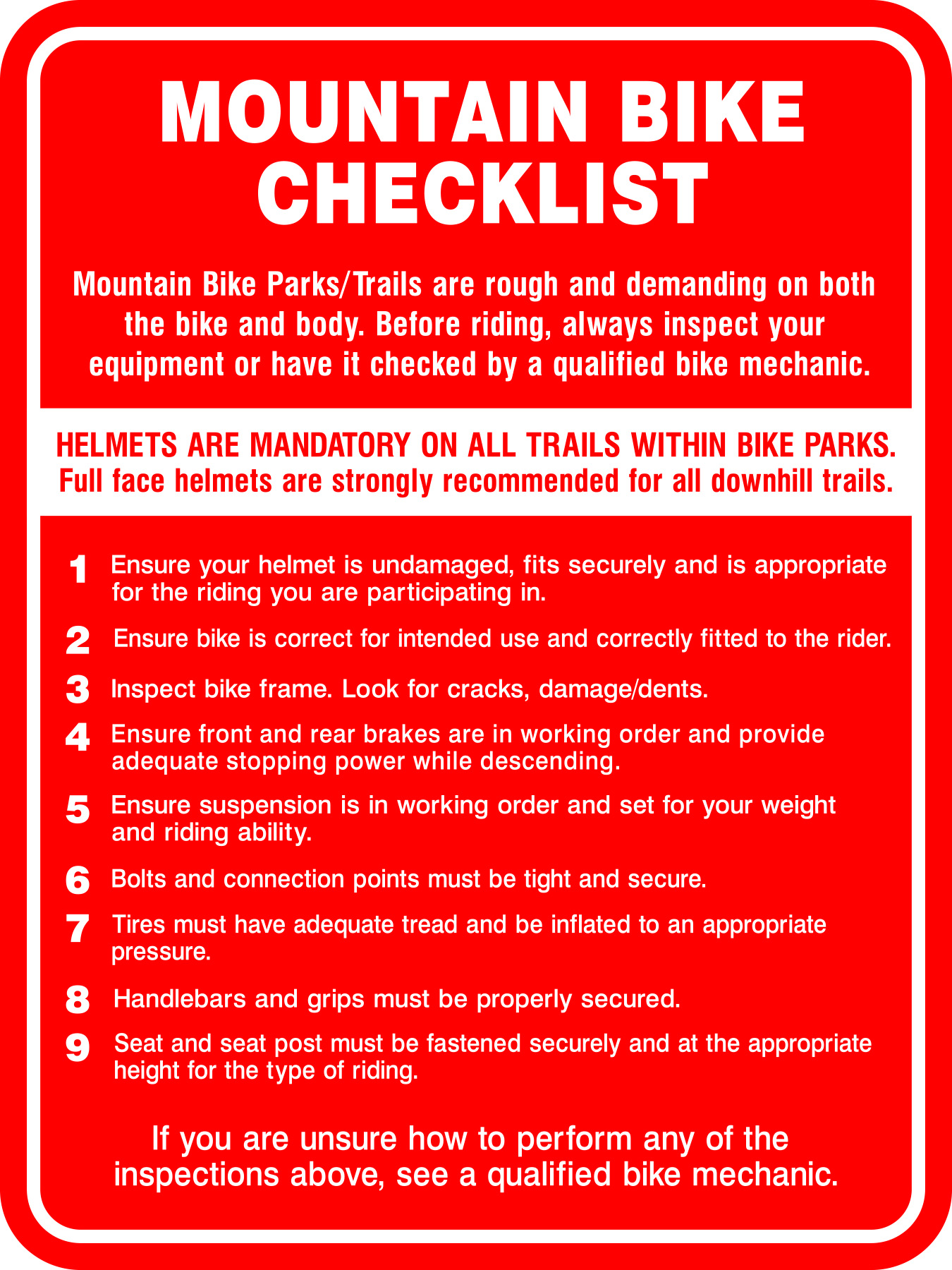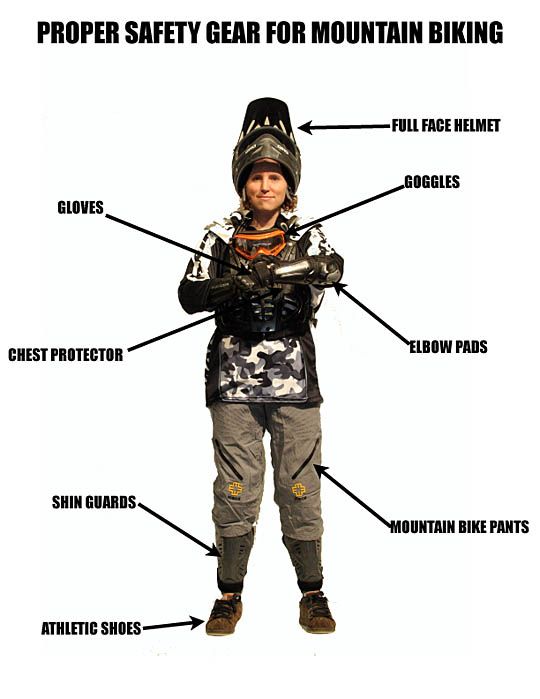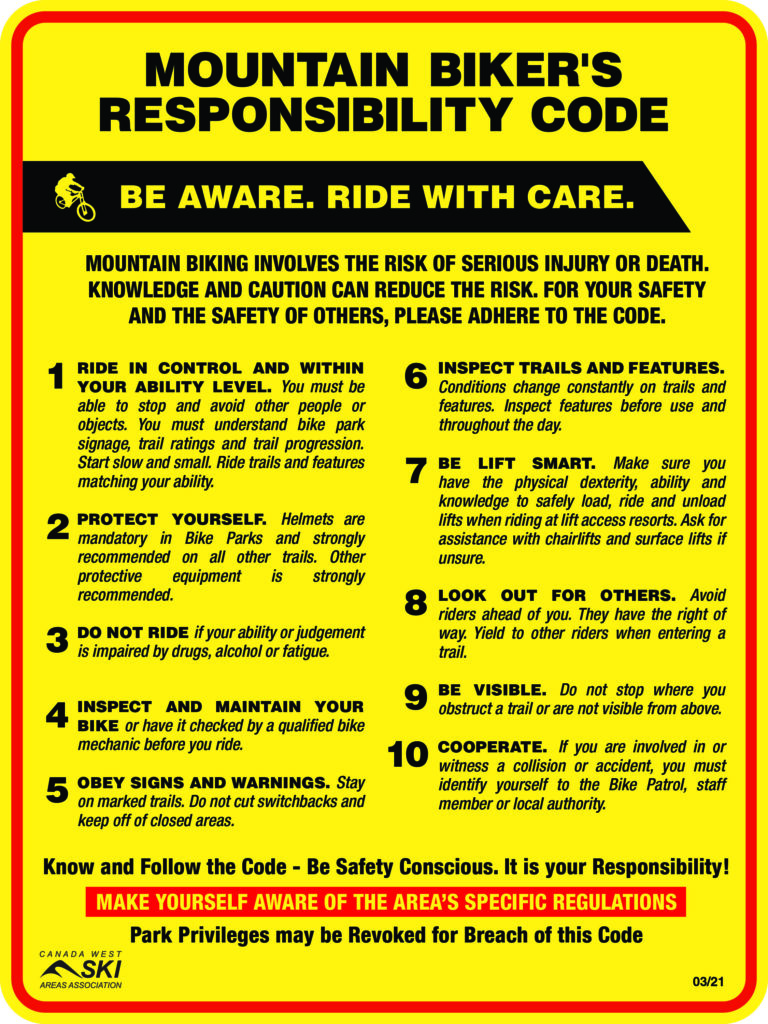bike Parks
Always wear a helmet, ride within your ability, never ride alone and stay on designated trails.Falls are inevitable when learning a new sport. Having the right equipment and protecting yourself from abrasions is key to enjoying your day in the bike park.
Most ski areas with bike parks will have a rental centre to set you up with all the important gear.
Here are some things to consider when preparing to hit the bike park.
helmets
Helmets are required for all riders.
Full-face helmets are recommended in bike parks.
Protection
- Full finger gloves
- Knee & Elbow pads
- Long sleeve shirt
- Goggles or sunglasses
- Sturdy soled closed-toe shoes
- Body armour & neck braces (optional)
bike
Mountain bikes must be in good working order.
Full-suspension mountain bike with hydraulic disc brakes are recommended.
Check with your ski area on bike sizes - some bikes may be too small or too big to fit in the carriers.
repairs
Important! Wearing protective gear does NOT make you invincible. Always ride within your ability.
mountain biker's responsibility code
The Mountain Biker's Responsibility Codes provides the basic rules of conduct and must be followed by all using the Bike Park.
Learn More about the Responsibility Codes.
SLOW DOWN BEFORE YOU SPEED UP
Crashes can happen on your first lap. Ride the trail multiple times to get familiar with the features and equipment you’re on so you can confidently push your limits without pushing your threshold. Jumping skills are required for Freeride trails.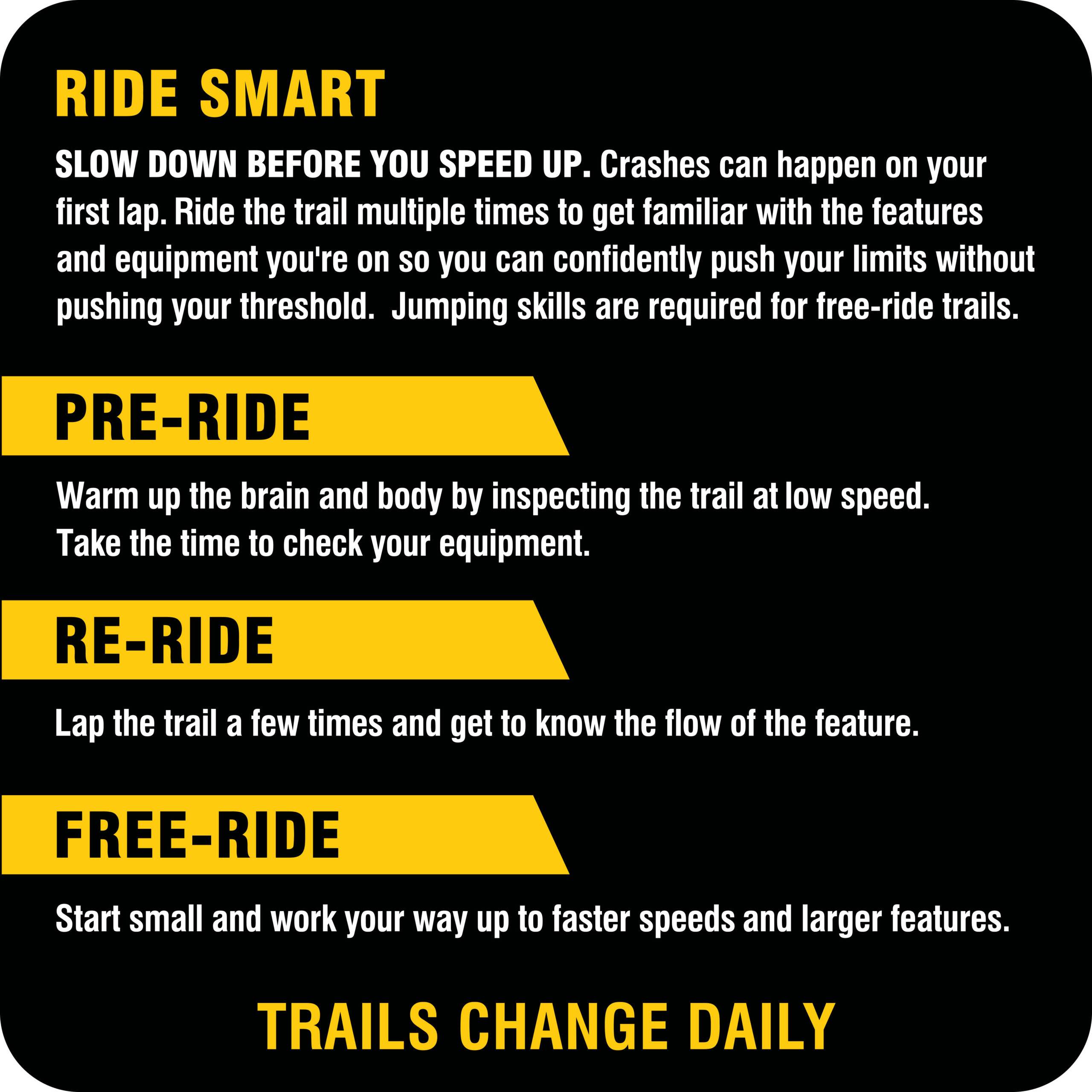
Trail Difficulty & Types
Bike Parks contain colour trail designations, just like ski runs. However, Bike Parks also have two classifications of trail systems: Technical & Freeride.
Learn more about trail difficulty & types in the Signage section of this website.
Note, signage may vary at different Bike Parks. Be aware of your local areas' signage.
